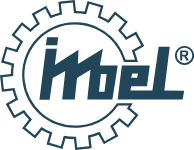Global Reverse Osmosis Systems Market Size and Forecast Through 2021 by Technavio
Technavio analysts forecast the global reverse osmosis (RO) systems market to grow at a CAGR of more than 7% during the forecast period, according to their latest report.
This Smart News Release features multimedia. View the full release here: http://www.businesswire.com/news/home/20170504006531/en/

Technavio has published a new report on the global RO systems market from 2017-2021. (Graphic: Business Wire)
The research study covers the present scenario and growth prospects of the global reverse osmosis systems market for 2017-2021. The market is segmented based on the end-user (residential and industrial) and geography (APAC, EMEA, and the Americas).
According to Thanikachalam Chandrasekaran, a lead analyst at Technavio for water and waste management research, “The global RO systems market is expected to grow dynamically during the forecast period, owing to the enormous boom in water distillation projects in APAC. Another reason for this dramatic increase is due to increase in investments by municipalities and industrial facilities in RO technologies.”
Looking for more information on this market? Request a free sample report
Technavio’s sample reports are free of charge and contain multiple sections of the report including the market size and forecast, drivers, challenges, trends, and more.
Technavio analysts highlight the following three factors that are contributing to the growth of the global reverse osmosis systems market:
- Advances in technologies
- Demand for safe and clean water
- Rapid industrialization
Advances in technologies
RO has become an important demineralization technique worldwide. Since the development of the first commercially viable RO membranes during the 1950s, improvements in performance and durability have resulted in membranes, which are more efficient and less costly to operate. For instance, low-energy RO membranes have succeeded in delivering high-quality permeate and high productivity with low-pressure requirements. This advance has allowed RO membranes to operate on low-temperature feed water sources that otherwise would require prohibitively high operating pressure. Other advances in membrane technology have addressed membrane fouling. “Low-fouling” membranes have been created by modifying the surface properties of the membranes, such as the charge, the hydrophilicity, and the roughness, by applying a coating over the membrane and by changing the membrane polymer.
Demand for safe and clean water
By 2030, nearly half of the world’s population will live in a situation of water stress due to population growth, resulting in the exponential increase in the water needed for human consumption, agriculture, and industry, thereby exacerbating the usage conflicts.
Water purification is gaining importance because of the shrinking water resources worldwide and increasing cost of wastewater disposal. In 2014, around 11.12% of the global population lacked access to water, and four out of 10 people lacked access to improved sanitation. Regions, such as the Middle East, North Africa, and Southeast Asia, are expected to face severe water shortages in the next decade, resulting from bad water management and improper reuse. In 2015, water crises were ranked the number one global risk by impact, as per the World Economic Forum.
Rapid industrialization
Industrialization leads to an increase in the use of water mainly because of the increase in the standards of living and the production of goods. It refers to the changes in the social and economic structure of society, which evolves from an agrarian-based society into an industrial one. Various industries, such as oil and gas, power generation, refineries, mining, construction, F&B, steel manufacturing, electronics, and pharmaceuticals, are responsible for contaminating water resources.
Thanikachalam says, “Since the existing level of water is not sufficient to meet the increase in demand, it becomes necessary to reuse and recycle this water for public use. This requirement leads to an increase in the demand for water treatment equipment that improves the water quality and makes it fit for domestic and industrial use.”
Browse Related Reports:
- Global Textile Industry Waste Management Market 2017-2021
- Global Industrial Water Treatment Equipment Market 2017-2021
- Global Industrial Water Purifier Market 2017-2021
Become a Technavio Insights member and access all three of these reports for a fraction of their original cost. As a Technavio Insights member, you will have immediate access to new reports as they’re published in addition to all 6,000+ existing reports covering segments like power, energy storage, and oil and gas. This subscription nets you thousands in savings, while staying connected to Technavio’s constant transforming research library, helping you make informed business decisions more efficiently.
About Technavio
Technavio is a leading global technology research and advisory company. The company develops over 2000 pieces of research every year, covering more than 500 technologies across 80 countries. Technavio has about 300 analysts globally who specialize in customized consulting and business research assignments across the latest leading edge technologies.
Technavio analysts employ primary as well as secondary research techniques to ascertain the size and vendor landscape in a range of markets. Analysts obtain information using a combination of bottom-up and top-down approaches, besides using in-house market modeling tools and proprietary databases. They corroborate this data with the data obtained from various market participants and stakeholders across the value chain, including vendors, service providers, distributors, re-sellers, and end-users.
If you are interested in more information, please contact our media team at media@technavio.com.
View source version on businesswire.com: http://www.businesswire.com/news/home/20170504006531/en/




